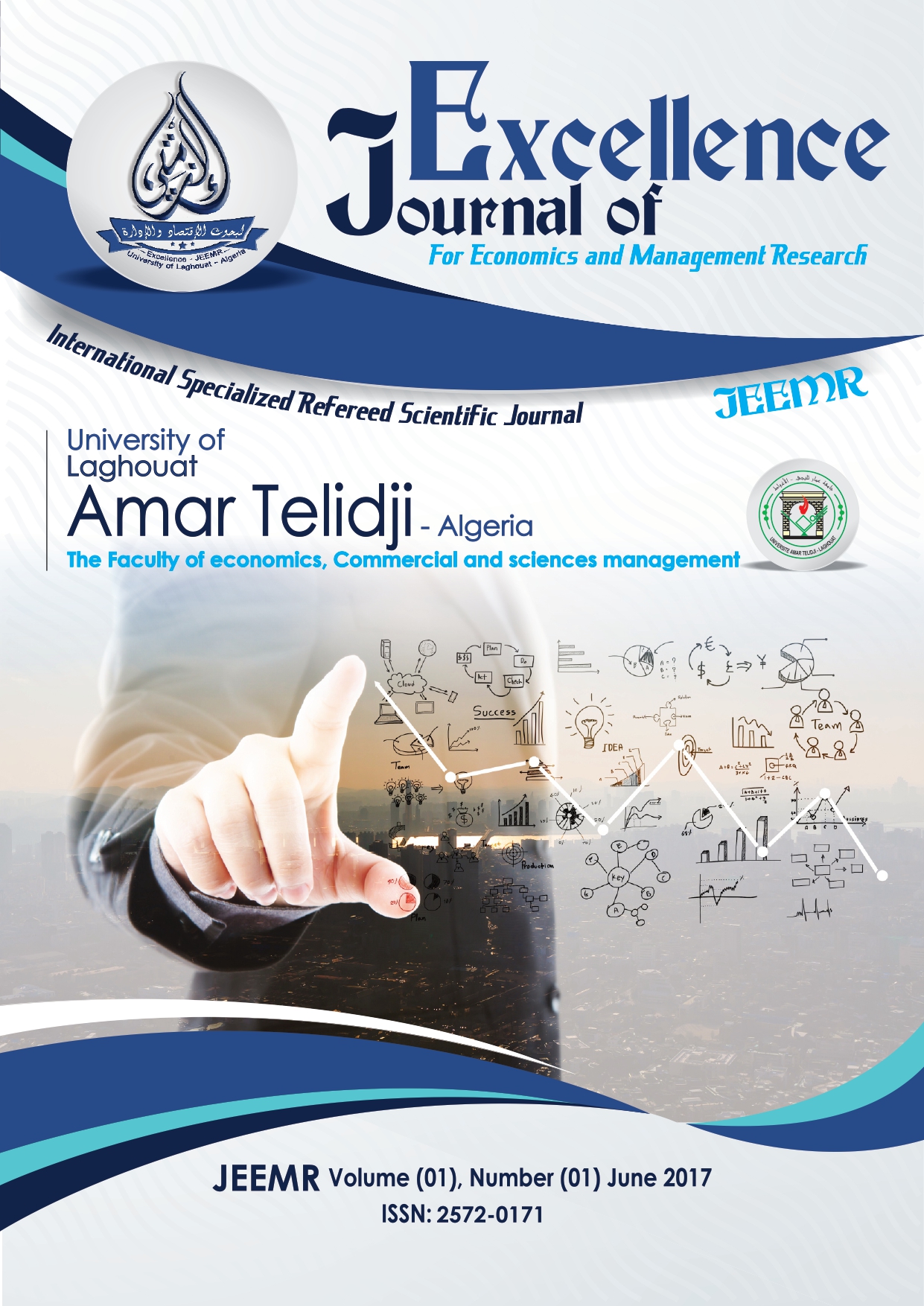The impact of psychosocial environment factors on mental health of human resources of special education schools
Abstract
This study aims to identify the impact of psychosocial environment factors among human resources working at special education schools. The study had applied the Job Content Questionnaire (JCQ) of Karasek (1985). The intersection of job demands and decision latitude generates a matrix of four working situations that affect the mental health. Questionnaires had been distributed to a sample of 150 pedagogues belonging to four (04) Algerian willayas (Algeries, Laghouat, Setif, Al-Chelef). The study had concluded in these findings: the psychosocial environment is job strain and may cause harmful consequences on mental health. We also found that there were no significant statistical differences between job demands and decision latitude. However, social support was statistically significant according to the type of disability which had been taken care of; and it was in the favor of those who took charge of hearing disability.
References
. مشوط، محمد سعد الفهد (2011). أثر بيئة العمل على الابداع الإداري، رسالة ماجستير غير منشورة، الكويت: قسم إدارة الأعمال، جامعة الشرق الأوسط، ص. 15- 16
. Karasek, R. (1979), Job demand, Job decision latitude, and mental strain: Implications for job redesign, Administrative Science Quarterly, 24 (2), 285-308. p. 287
. Bourbonnais, R. et al. (2004). « L’environnement psychosocial du travail et la santé mentale en soins de longue durée, évolution des contraintes et des problèmes de santé entre 2001 et 2003», Université Laval. P. 28
Ndjaboué, R. Vézina, M., Brisson, C. (2012). « Effets des facteurs psychosociaux au travail sur la santé mentale», Travail et Emploi, n° 129, 23-34, p. 23
. Karasek, R., Brisson, Q., Kawakami, N., Houtman, I., Bongers, P., Amick, B. (1998). “The Job Content Questionnaire (JCQ): An Instrument for Internationally Comparative Assessments of Psychosocial Job Characteristics”, Journal of Occupational Health Psychology, 3 (4), 322-355, p. 326
. Bourbonnais, R. et al. (1997). « Impact de l'environnement psychosocial de travail sur la santé mentale des infirmières en centres hospitaliers au Québec », Université Laval.
. Kawakami, N. & Fujigaki, Y. (1996). Reliability and Validity of the Japanese Version of Job Content Questionnaire: Replication and Extension in Computer Company Employees”, Industrial Health, 34, 295-306
. Guignon, N., Niedhmmer, I. & Sandret, N. (2008). Les facteurs psychosociaux au travail : une évaluation par le questionnaire dans l’enquête SUMER 2003. www.inrs.fr/dms/inrs/CataloguePapier/DMT/TI-TF-175/tf175.pdf (consulté le : 16/06/2017)
. Vézina, et al. (2006). Définir les risques : note de recherche sur la prévention des problèmes de santé mentale. Actes de la Recherche en Sciences Sociales, n° 163, 32-38. p. 34
. Gintrac, A. (2011). Le stress au travail, un état des lieux. Management et Avenir, n° 41, 89-106. p. 91
. الكخن، خالد رشيد (1997). الضغوط المهنية التي تواجه معلمي مؤسسات التربية الخاصة في الضفة الغربية. رسالة ماجستير غير منشورة، كلية العلوم التربوية، جامعة النجاح بالضفة الغربية، فلسطين.
الزيودي، محمد حمزة (2007). مصادر الضغوط النفسية والاحتراق النفسي لدى معلمي التربية الخاصة في محافظة الكرك وعلاقتها ببعض المتغيرات. مجلة جامعة دمشق، العدد (2). 189-219.
البخيت، صلاح الدين، وعمر، إبراهيم (2011). مصادر الضغوط المهنية لدى معلمي ومعلمات التربية الخاصة وعلاقتها ببعض المتغيرات المهنية والديمغرافية في ولاية الخرطوم. مجلة الجزيرة للعلوم التربوية والإنسانية، 8 (1).
. Légeron, P. (2008). Le stress professionnel. L'information psychiatrique, 84 (9), 809-820. p. 813








